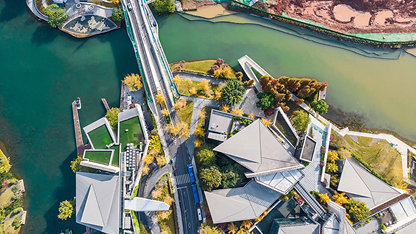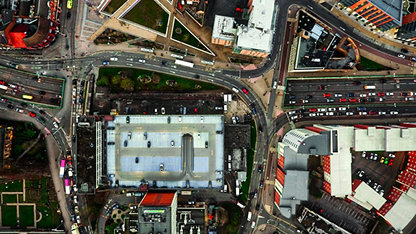The EU Green Week, an eagerly anticipated environmental event, brings together policymakers, industry leaders, experts, and citizens to address sustainability and discuss pressing environmental challenges. The event’s focus this year was on showcasing climate initiatives and policies that will lead to a climate-neutral world.

With biodiversity taking centre stage, EU Green Week 2023 acted as a catalyst for driving positive change and paving the way towards a greener future.
In her welcome address, Ursula von der Leyen, the President of the European Commission, emphasized the importance of the EU Green Deal and the EU's strategy to achieve the 2050 objective. She highlighted the following:
“Last year for the very first time, the European Union generated more electricity from the sun and wind than from gas. We are on track to double the deployment of renewable energy this year again. We have persistently increased our climate ambition with Fit for 55 and then REPowerEU. We are leaving the throwaway culture behind. We are entering a circular economy based on innovation. We’re modernizing our industry with the next zero industry act. Thus, we are creating hundreds of thousands of new jobs all over Europe”
The EU Green Week 2023 featured a diverse range of sessions covering various topics, such as the upcoming Nature Restoration Law for biodiversity restoration, circularity and financing the EU Green Deal.
Restoring Ecosystems for a Sustainable Future: The European Union's Nature Restoration Law
In 2022, the European Union introduced the Nature Restoration Law (NRL), a comprehensive legislation aimed at addressing the loss of biodiversity and restoring ecosystems for the benefit of people, the climate and planet.
The deterioration of Europe’s ecosystems carries significant consequences for biodiversity, health, and well-being. Biodiversity loss and climate change are two interconnected crises that rely on one another for effective resolution.
The NRL is the first continent-wide initiative seeking to restore ecosystems, habitats, and species across the European Union's expansive land and sea areas.
This law underscores the importance of safeguarding and enhancing Europe's natural capital, including forests, wetlands, rivers, and coastal areas. It promotes the restoration of degraded habitats, the rewilding of landscapes, and the protection of endangered species. By implementing nature-based solutions, such as reforestation and the creation of wildlife corridors, the NRL law seeks to enhance ecosystem resilience and cultivate a harmonious relationship between humans and nature.
Targets
The proposal incorporates a comprehensive objective for the long-term recovery of nature in the European Union’s land and sea areas, along with binding restoration targets for specific habitats and species. These measures are intended to cover at least 20% of the EU’s land and sea areas by 2030, and ultimately all ecosystems in need of restoration by 2050.
The proposal establishes specific targets for various ecosystems such as pollinating insects, forest ecosystems urban ecosystems, agricultural ecosystems, marine ecosystems, and river connectivity.
Restoring Urban Biodiversity
Although urban ecosystems represent only a small proportion of the EU’s total land area, they are home to a significant number of Europeans. Many European cities harbour rich biodiversity and can play an important role in their preservation. Approximately, 2,842 Natura 2,000 sites, accounting for around 10% of the Natura 2000 network, are partially located within cities.
Historically, urban development has been viewed mainly as a threat to nature. Whilst this perspective holds some truth, , it fails to acknowledge the important role cities can play in safeguarding biodiversity and improving the quality of life and sustainability of the cities themselves. In addition to the ecosystem services, green spaces rich in biodiversity, such as Natura 2000 sites, offer attractive areas for recreation, relaxation, social interaction, and education.
The European Union’s NRL holds significant importance for the built environment due to its potential positive impact urban ecosystems. Here are several reasons why this law is crucial for the built environment and cities:
- Biodiversity Conservation: Urbanization and human activities have led to biodiversity loss. The restoration of habitats and the protection of species are essential for conserving urban biodiversity. Preserving biodiversity in cities contributes to a healthier and more resilient urban environment.
- Climate Adaptation and Mitigation: Cities are particularly vulnerable to the impacts of climate change, such as heatwaves and air pollution. Restoring ecosystems can enhance urban resilience to climate change. For example, urban green spaces act as natural cooling agents, reducing heat.
- Well-being and Quality of Life: Access to nature in cities has been linked to improved mental and physical health, reduced stress levels, increased social cohesion, and enhanced overall well-being.
- Sustainable Urban Development: By integrating nature restoration into urban planning and design, cities can pursue more sustainable and resilient development. This includes incorporating green infrastructure, promoting biodiversity-friendly construction, and implementing nature-based solutions to address urban challenges.
Next steps
Earlier this year, the Council adopted its position on the law, while two committees in the European Parliament, namely the agriculture committee and the fisheries committee, have already voted against the NRL
The draft legislation is at the centre of the debate in the environment committee. The proposal has proven to be highly controversial, with serious concerns raised by several Member States.
On June 15, the European Parliament provided its initial assessment but failed to settle the growing controversy. The vote has been postponed to June 27.














